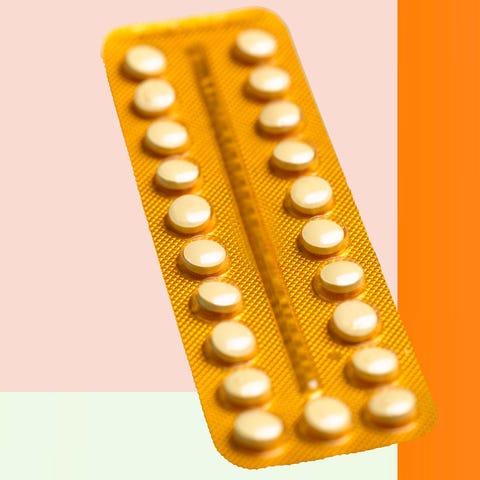These days, the options for contraception methods are as abundant as Ariana Grande chart-toppers. There’s the intrauterine device (IUD), contraceptive implants, diaphragms, condoms, and, of course, the ever popular birth control pill.
First approved by the FDA in 1960, birth control was legalized for married couples in 1965, and then for people everywhere—regardless of marital status—in 1972. Since 1982, the pill has become one of the two most commonly used methods of birth control (next to female sterilization), according to the Centers for Disease Control and Prevention (CDC).
According to the CDC, four out of five sexually experienced women have reportedly used it at one point or another. And if these women are using it perfectly (we’ll get into that later), only 9 out of every 100 will experience an unintended pregnancy.
But what exactly is in the pill, and how does it work to prevent pregnancy? We connected with top experts to get the deets, as well as answers to some of the most common birth control pill questions.
So, remind me: What exactly is the pill?
Birth control pills, or hormonal contraceptives, are a daily oral pill comprised of synthetic hormones that help you prevent pregnancy.
There are two main types: combination pills and progestin-only pills. The former is made with estrogen and progestin. Progestin-only pills, on the other hand, only contain progestin.
Right, right. So… how do birth control pills work?
Combination pills work a bit differently than progestin-only pills. Here a break down of how each does it’s thing.
💊 Combination pills 💊
A classic combination pill is made with progestin and estrogen, which prevents pregnancy by keeping the ovaries from releasing eggs, according to Christine Greves, MD, an OB-GYN at Orlando Health Winnie Palmer Hospital for Women & Babies. The pill also causes changes in the cervical mucus, making it difficult for the sperm to find an egg, the National Institutes of Health (NIH) explains.
There are a few different types of combination pills: monophasic, multiphasic, and extended-cycle.
Monophasic: These pills deliver the same dose of each hormone daily. On the last week of the cycle, you take seven days of hormone-free pills, Dr. Greves explains.
Multiphasic: Users will get two or three different levels of hormones for the first 21-days of their cycle, Dr. Greves notes. Then, hormone-free pills are taken for the next seven days.
Extended-Cycle: Generally, these packs contain 84 active pills and seven days of inactive pills, according to the International Journal of Women’s Health. Women taking these pills should technically only get a period four times a year; however, sometimes spotting occurs.

Getty Images
💊 Progestin-only pills 💊
There are also progestin-only pills, sometimes referred to as mini-pills. These just contain progestin, and function differently than combination pills in that they prevent sperm from reaching the egg by thickening the mucus of the cervix, according to The U.S. Department of Health & Human Services (HHS). They do not consistently suppress ovulation like combination pills.
“These pills are ideal for someone who can’t take estrogen because of potential side effects or other disorders,” says Tara Shirazian, MD, a gynecologist at NYU Langone Health. “This could include smokers and patients with a history of blood clots. [Or, people] who experience very bad nausea, vomiting, or breast pain or tenderness [while taking a combination pill].”
What are the potential side effects of the pill?
According to Dr. Shirazian, some of the potential side effects of birth control are:
If you’re struggling with side effects, talk to your doctor about trying a different pill. “There is no one-size-fits-all, so you may have to try a few different things before you find one that feels right for you,” Dr. Shirazian says. “But before you rush off to a new pill, I would use any new method for a minimum of three months before making that choice. It takes a while for your body to adjust.”
Def want to get the pill. What’s the cost and how do I get it?
Depending on what state you live in, you may need a prescription from your doctor to get birth control pills, according to the HHS.
Under the Affordable Care Act, most insurance plans cover the cost of all methods of birth control (read: zero cost to you). Typical out-of-pocket cost without insurance coverage for a single pack can be up to about $50. In either case, you can purchase the pill at a pharmacy or health center liked Planned Parenthood. In a few states, you can even get your prescription filled online.
Cool. So, last thing: How do I make the pill work best for me?
Your goal should be to take the pill at the exact same time every day—or at least within a one hour window. The less precise you are with when you take your pill, the less effective that pill becomes, Dr. Shirazian cautions.
Need a little help remembering to take your pill? Try setting an alarm on your phone, getting a pill-reminder app, or taking it when you complete a daily task, like brushing your teeth or washing your face.
Source: Read Full Article
